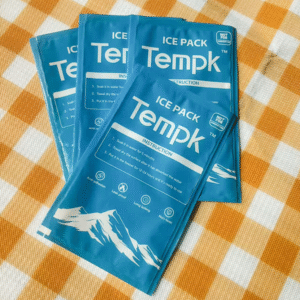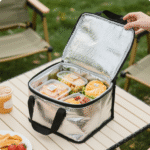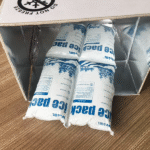O envio de produtos sensíveis à temperatura com segurança é essencial, especialmente ao lidar com bens perecíveis. A embalagem de gelo seco da FedEx garante que seus itens permaneçam congelados durante o trânsito. Neste guia abrangente, Vamos explorar como embalar corretamente, rótulo, e enviar gelo seco com a FedEx enquanto adere a requisitos de segurança e regulamentação.
-
O que é FedEx Dry Ice Packaging? Descubra os recursos e benefícios do uso de gelo seco para envio.
-
Como embalar adequadamente o gelo seco para envio? Um guia passo a passo para garantir que sua remessa permaneça segura.
-
Quais são as principais precauções de segurança? Práticas recomendadas para lidar com gelo seco.
-
O gelo seco pode ser usado para todas as remessas? Aprenda as aplicações e limitações ideais.
O que é Fedex embalagem de gelo seco?
A embalagem de gelo seco da FedEx foi projetada para itens sensíveis à temperatura que requerem congelamento ou armazenamento ultra-frio. Ideal para produtos farmacêuticos, Suprimentos médicos, itens alimentares, e espécimes biológicos, O gelo seco fornece uma maneira eficiente de manter as temperaturas abaixo de -78,5 ° C (-109.3°F).
A ciência por trás da embalagem de gelo seco
Gelo seco sublima diretamente de um sólido a um gás, Fornecendo resfriamento sem deixar resíduos líquidos. Isso é crucial ao enviar materiais sensíveis, como vacinas ou amostras biológicas. A FedEx garante contenção segura para evitar acidentes durante o trânsito.
| Tipo de embalagem | Quantidade de gelo seco | Temperatura | Adequado para |
|---|---|---|---|
| Remessas pequenas | Até 5 libras | -109.3°F | Produtos farmacêuticos, vacinas |
| Remessas médias | 6-20 libras | -109.3°F | Comida fresca, Produtos químicos |
| Grandes remessas | Sobre 20 libras | -109.3°F | Biotech, amostras de laboratório |
Como embalar adequadamente o gelo seco para envio com a Fedex?
A embalagem de gelo seco garante corretamente a segurança e a eficiência. A FedEx fornece instruções detalhadas de embalagem, Mas aqui está uma versão simplificada do processo:
Etapa 1: Escolha a embalagem certa
Use embalagens pré-aprovadas que podem lidar com as temperaturas extremas de gelo seco. Recipientes isolados, como caixas de isopor ou opções revestidas de espuma, são ideais para evitar a transferência de calor e garantir a temperatura necessária.
Etapa 2: Determine a quantidade de gelo seco
A quantidade de gelo seco necessária depende do tamanho da remessa e do tempo de trânsito. Uma diretriz geral é 1.5-2 libras de gelo seco por pacote para cada 24 horas de envio.
Etapa 3: Colocação correta de gelo seco
Coloque o gelo seco no fundo do recipiente, garantindo que ele não entre em contato diretamente com seus produtos para evitar congelar. A embalagem da FedEx normalmente inclui aberturas para permitir que o gás escape durante a sublimação.
Etapa 4: Sele a embalagem e etiqueta
Selar o pacote firmemente, Garantir nenhuma lacuna onde o gelo seco possa escapar. Rotule a remessa com a etiqueta "gelo seco", UN1845, e o peso líquido do gelo seco.
Quais são as principais precauções de segurança ao usar gelo seco?
Gelo seco, quando usado corretamente, é seguro. No entanto, O mal, pode levar a sérios riscos de segurança. Aqui estão algumas precauções:
1. Garanta ventilação adequada
O gelo seco sublima em gás dióxido de carbono, que pode deslocar o oxigênio. Sempre use recipientes com ventilação adequada para permitir que o gás escape com segurança.
2. Manuseie com cuidado
Use luvas, pinças, ou outro equipamento de proteção para lidar com gelo seco, como contato direto pode causar um congelamento grave.
3. Não armazene dentro de casa
Nunca guarde gelo seco em um espaço fechado sem ventilação adequada, como um carro ou sala mal ventilada.
4. Descarte adequado
Uma vez que o gelo seco sublimado, Descarte os materiais de embalagem de acordo com os regulamentos locais.
O gelo seco pode ser usado para todos os tipos de remessas?
Enquanto o gelo seco é essencial para manter as temperaturas frias, Não é adequado para todos os tipos de mercadorias. Gelo seco é ideal para:
-
Farmacêuticos e suprimentos médicos: Vacinas e medicamentos que requerem temperaturas abaixo de zero.
-
Alimentos perecíveis: Comida congelada e frutos do mar, garantindo que eles permaneçam frescos durante o trânsito.
-
Amostras biológicas e de laboratório: Espécimes de laboratório e amostras de DNA que precisam permanecer congeladas.
Não é adequado para:
-
Itens sensíveis à não temperatura: Produtos que não exigem armazenamento a frio.
-
Produtos líquidos: O frio extremo pode danificar bens líquidos ou causar congelamento.
2025 Tendências no transporte de gelo seco
Últimas inovações em embalagens de gelo seco
-
Materiais de isolamento aprimorados: Novas opções de embalagem fornecem melhor retenção de temperatura, Melhorando a eficiência do envio.
-
Sensores inteligentes: Tecnologia de rastreamento sensível à temperatura para monitoramento em tempo real.
-
Sustentabilidade: A indústria de logística está focada na redução do impacto ambiental da embalagem de gelo seco.
Insights de mercado
Com uma demanda crescente por bens perecíveis, A FedEx está otimizando suas soluções de embalagem de gelo seco para atender às necessidades do cliente. Espere ver mais inovações focadas no monitoramento de temperatura e práticas sustentáveis em 2025.
Perguntas frequentes
Quanto gelo seco posso enviar com a Fedex?
FedEx permite 5.5 libras (2.5 kg) de gelo seco por pacote para remessas domésticas. Para remessas internacionais, Os regulamentos podem variar.
Posso usar gelo seco para itens frágeis?
O gelo seco não é recomendado para mercadorias frágeis, a menos que sejam projetadas especificamente para suportar temperaturas congelantes.
Conclusão e recomendações
A FedEx Dry Ice Packaging oferece uma solução confiável e segura para itens sensíveis à temperatura do envio. Seguindo métodos de embalagem adequados e precauções de segurança, Você pode garantir que seus produtos atinjam o destino deles em estado ideal.
PRÓXIMOS PASSOS: Entre em contato com a FedEx para obter detalhes de embalagem, Obtenha conselhos profissionais, e garantir que toda a documentação necessária esteja em vigor.
Sobre Tempk
Tempk é líder em logística da cadeia fria, fornecendo soluções inovadoras de embalagem para bens perecíveis. Com anos de especialização, Somos especializados em garantir que suas remessas permaneçam intactas e seguras durante todo o trânsito.
Obtenha conselhos especializados hoje: Entre em contato conosco para obter consultas personalizadas sobre suas necessidades de remessa sensíveis à temperatura.























